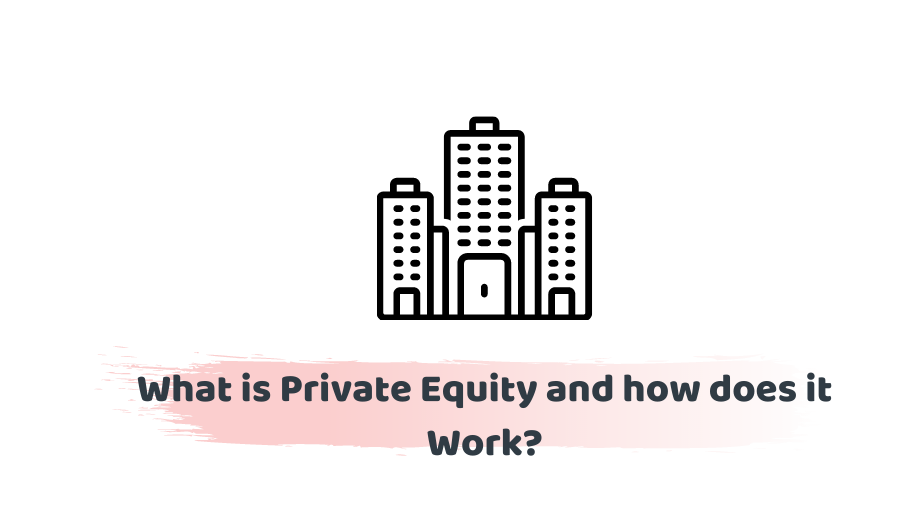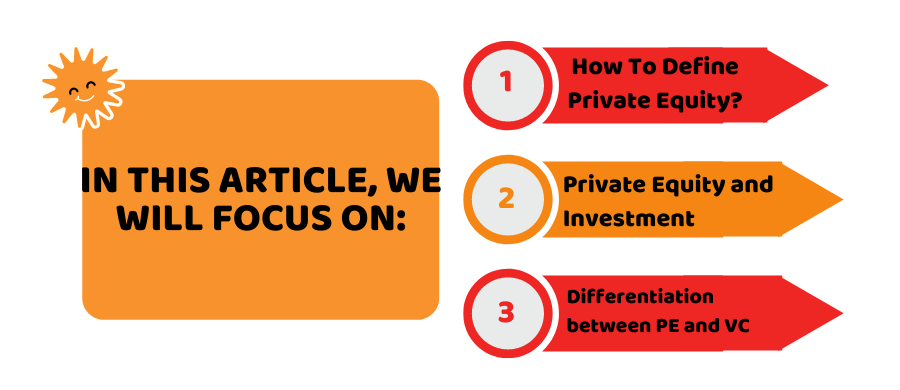Are you seeking a guide on what precisely is private equity? We are here with a basic idea for anybody keen on finding out about working in the private business sector, this blog focuses on the essentials of Private Equity. This includes the following:
- How To Define Private Equity?
- Private Equity and Investment
- Differentiation between PE and VC
How To Define Private Equity?
Private equity (PE) is a kind of financing where capital is put into organisation. Normally, PE speculations are made into the mature organisations in customary enterprises in return for equity, or proprietorship stake.
Accotax Chartered Accountants in London is a dedicated firm based in Morden, UK. Call us at 020 3441 1258 or send us an email at info@accotax.co.uk
Private Equity Firm:
A PE firm is a kind of venture company. They put resources into organisations to expand their worth after some time before in the end selling the organisation at a benefit. Like funding (VC) firms, PE firms utilize capital raised from restricted accomplices (LPs) to put resources into promising private organisations.
Not at all like VC firms, PE firms regularly take a larger part stake—half proprietorship or more—when they put resources into organisations. Private equity firms generally have larger part responsibility for organisations immediately.
Private Equity Investors:
The investors working at a private equity firm are called PE investors. They are basic to raising capital just as recognizing organisations that will create wise speculation open doors.
Private Equity Store:
To put resources into an organisation, PE financial backers raise pools of capital from restricted accomplices to shape an asset—otherwise called a private equity store. Whenever they’ve hit their gathering pledges objective, they close the support and put that capital into promising organisations.
PE Supports versus Stock investments:
Both private equity assets and mutual funds are confined to authorize financial backers. Be that as it may, the greatest contrasts between PE assets and speculative stock investments are reserve construction and venture targets. Speculative stock investments will in general work in the public business sectors, putting resources into traded on open market organizations while PE finances center around private organisations.
Happy with your setup? Let us manage your client. We’ll act as your back office.
PE Finances versus Common Assets:
The greatest contrasts between PE reserves and common assets are the place where capital comes from, the kinds of organizations the asset puts resources into, and how the firm gathers charges. PE supports raise capital from LPs, which are certified, institutional financial backers, and shared assets influence capital from ordinary financial backers.
PE reserves ordinarily put resources into private organizations though common assets normally put resources into traded on open market organisations. What’s more, common assets are just permitted to gather the board charges, though PE assets can gather execution expenses, which is talked about additional underneath.
Private Equity Firms – How do they bring in cash?
PE finances gather both administration and execution expenses. These can change from one asset to another, however, the ordinary charge structure adheres to the 2-and-20 principle.
The Executive’s Charges:
Determined as a level of resources under administration or AUM, regularly around 2%. These charges are expected to cover everyday costs and overhead and are brought about consistently.
Execution Expenses:
Determined as a level of the benefits from contributing, regularly around 20%. These expenses are planned to boost more prominent returns and are paid out to workers to compensate for their prosperity.
How does Private Equity Function?
To put resources into an organization, PE investors raise pools of capital from restricted accomplices to shape the asset. Whenever they’ve hit their gathering pledges objective, they close the support and put that capital into promising organisations.
PE financial backers might put resources into an organization that is stale, or possibly upset, yet at the same time gives indications for development potential. Albeit the design of speculations can differ, the most well-known arrangement type is a utilized buyout.
In a utilized buyout, a financial backer buys a controlling stake in an organisation utilizing a blend of equity and a lot of obligation, which should ultimately be reimbursed by the organization. In the meantime, the financial backer attempts to further develop benefits, so the obligation reimbursement is to a lesser extent a monetary weight for the organisation.
At the point when a PE firm sells one of its portfolio organisations to another organisation or investor, the firm ordinarily makes a benefit and circulates gets back to the restricted accomplices that put resources into its asset. Some private equity-upheld organizations may likewise open up to the world.
Private Equity and Investment:
Private equity alludes to speculations or possession in private organisations. It’s likewise utilized as a term for the PE methodology of contributing. Funding speculations are a type of PE venture that will in general zero in addition to beginning phase new companies. Thus, VC is a type of private equity.
Differentiation between PE and VC:
Here are some of the major differences listed down.
Private Equity:
- PE firms regularly put resources into mature organisations in conventional businesses.
- Utilizing capital submitted from LPs, PE financial backers put resources into promising organizations—regularly taking a larger part stake (>50%).
- At the point when a PE firm sells one of its portfolio organizations to one more organization or financial backer, returns are appropriated to the PE financial backers and the LPs. Financial backers regularly get 20% of the profits, while LPs get 80%.
Venture Capital:
- VC firms regularly put resources into tech-centered new businesses and other youthful organisations in their seed.
- Utilizing submitted capital, VC financial backers ordinarily take a minority stake (<50%) in the organizations they put resources into.
- A large portion of these organisations are not completely settled or beneficial, so they can be dangerous speculations—yet with that hazard comes the chance for huge returns.
- The firm makes a benefit if an organisation they’ve put resources into opens up to the world or gets obtained, or by offering a portion of its offers to one more financial backer on the auxiliary market.
Can’t find what you are looking for? why not speak to one of our experts and see how we can help you are looking for.
Conclusion:
So, to conclude we can say that Private equity is an elective resource class close by land, funding, troubled protections and that’s just the beginning. Elective resource classes are viewed as less customary equity speculations, which implies they are not as effortlessly got to as stocks and securities in the public business sectors.
Disclaimer: This article is based on general information on Private Equity.






















































